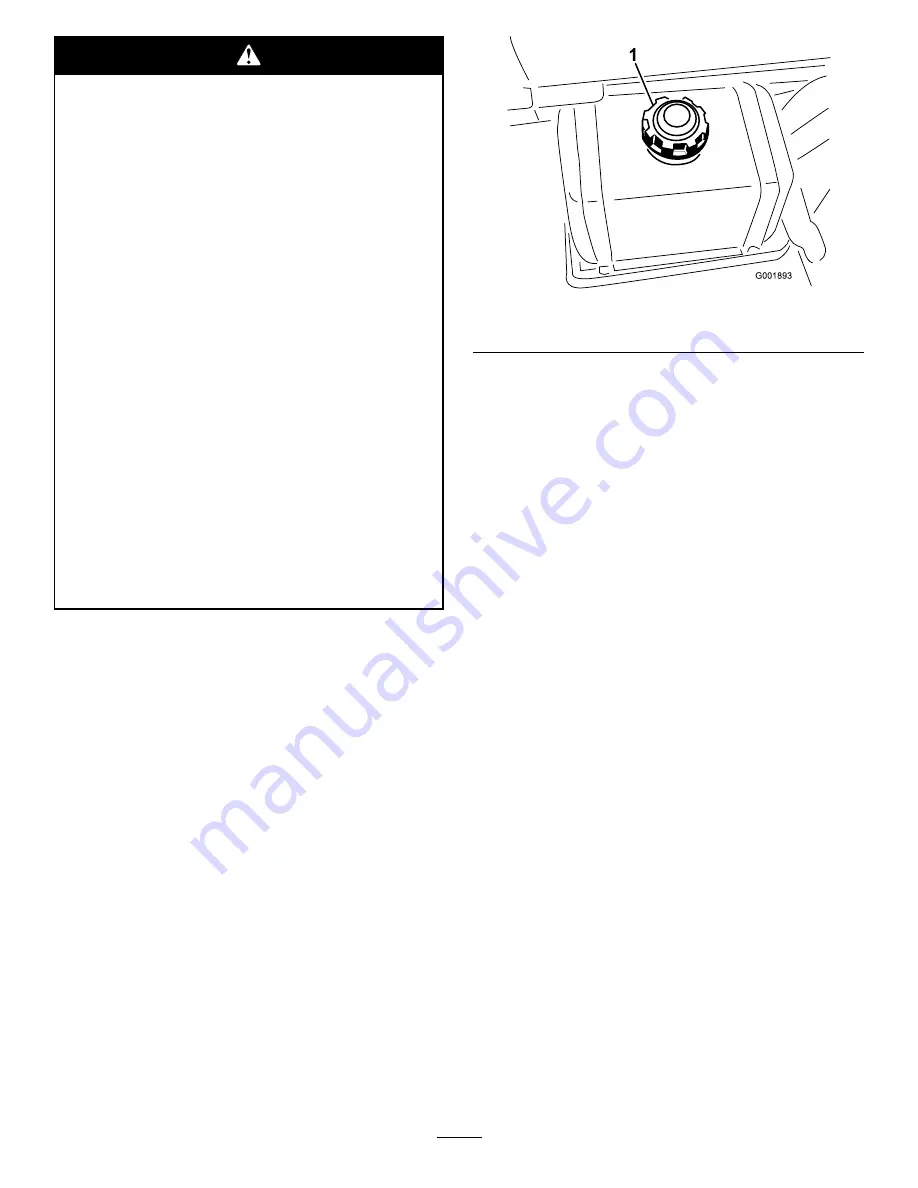
In certain conditions during fueling, static
electricity can be released causing a spark
which can ignite the gasoline vapors. A fire
or explosion from gasoline can burn you and
others and can damage property.
•
Always place gasoline containers on the
ground away from your vehicle before filling.
•
Do not fill gasoline containers inside a
vehicle or on a truck or trailer bed because
interior carpets or plastic truck bed liners
may insulate the container and slow the loss
of any static charge.
•
When practical, remove gas-powered
equipment from the truck or trailer and
refuel the equipment with its wheels on the
ground.
•
If this is not possible, then refuel such
equipment on a truck or trailer from a
portable container, rather than from a
gasoline dispenser nozzle.
•
If a gasoline dispenser nozzle must be used,
keep the nozzle in contact with the rim of
the fuel tank or container opening at all
times until fueling is complete.
Recommended Gasoline
Use fresh, clean, unleaded regular gasoline suitable for
automotive use (87 pump octane minimum). Leaded
gasoline may be used if unleaded regular is not available.
Important:
Never use gasoline containing
methanol, gasoline containing more than 10%
ethanol, gasoline additives, or white gas because
engine fuel system damage could result.
Filling the Fuel Tank
The fuel tank capacity is approximately 5 US gallons
(19 L).
Note:
The fuel tank cap contains a gauge which shows
the fuel level; check it frequently.
1. Shut the engine off and set the parking brake.
2. Clean the area around the fuel tank cap (Figure 21).
Figure 21
1.
Fuel tank cap
3. Remove the fuel tank cap.
4. Fill the tank to about one inch below the top of the
tank, (bottom of the filler neck). This space in the
tank allows gasoline to expand. Do not overfill.
5. Install the fuel tank cap securely.
6. Wipe up any fuel that may have spilled.
Pre-Starting Checks
Check the following items each time you begin using
the sprayer for the day:
•
Check the tire pressure.
Note:
These tires are different than car tires; they
require less pressure to minimize turf compaction
and damage.
•
Check all fluid levels and add the appropriate
amount of specified fluids, if any are found to be
low.
•
Check the brake pedal operation.
•
Check to see that the lights are working.
•
Turn the steering wheel to the left and right to
check steering response.
•
Check for oil leaks, loose parts, and any other
noticeable malfunctions. Make sure the engine is off
and all moving parts have stopped before checking
for oil leaks, loose parts, and other malfunctions.
If any of the above items are not correct, notify your
mechanic or check with your supervisor before taking
the sprayer out for the day. Your supervisor may want
you to check other items on a daily basis, so ask what
your responsibilities are.
25
Summary of Contents for 41179
Page 62: ...Schematics Electrical vehicle Rev B 62...
Page 63: ...Electrical spray system Rev A 63...
Page 64: ...Hydraulic Rev A 64...
Page 66: ...Notes 66...
Page 67: ...Notes 67...
















































